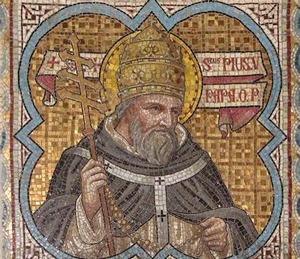 Today, the Dominican family rightly rejoices in their brother Saint Thomas Aquinas, the Angelic Doctor. Thomas is one of Holy Church’s greatest theological minds. One can speak of all the things Aquinas has given us, and we can speak of the need to have Thomism as a way to begin to come to understand Divine Mystery; we’re not there yet. Aquinas would certainly agree: you can know it all but unless you live the Christian faith you really have nothing.
Today, the Dominican family rightly rejoices in their brother Saint Thomas Aquinas, the Angelic Doctor. Thomas is one of Holy Church’s greatest theological minds. One can speak of all the things Aquinas has given us, and we can speak of the need to have Thomism as a way to begin to come to understand Divine Mystery; we’re not there yet. Aquinas would certainly agree: you can know it all but unless you live the Christian faith you really have nothing.
The opening prayer for Mass today speaks of Aquinas’ zeal for holiness as the first premise; understanding and imitating the accomplishments is secondary. The Prayer after Communion speaks of Christ the teacher, Christ the living bread, truth and the need to express all these things in works of charity.
Works of charity are an expression of the Good News given to us by the Lord.
The priest at Mass today reminded us of a fact that I tend to fall into errors that are all-too-common: on the one hand we can say, “I know it all” and on the other hand we can say, “I don’t know enough, I can never measure up.” One attitude is arrogant, keeping the faith as an idea, with very little attention to the heart. The other attitude is simplistic, silly and rooted in a false humility and laziness. Both are straw, grass clippings as Aquinas would state. What both have in common is a the theological virtue of charity. Charity connects us with the Divine Mystery.
Most certainly, Thomas would tell us to know the faith well, but allow the faith to be a point of encounter with the Lord in a contemporary way. No good Catholic would hold to knowing nothing of the content of Divine Revelation. Jesus, indeed, is contemporary with our daily existence.
What Thomas Aquinas has given us is a map by which we come to understand the Divine Mystery through charity. Charity is key to the Dominican charism for the Church and for our daily living of our Catholic faith. No charity, no real belief in Jesus Christ as Messiah. There is no via media here. The point: don’t confuse the map for the road on which to walk.
 Brother Angelico was reported to say: “He who does Christ’s work must stay with Christ always.” This motto earned him the epithet “Blessed Angelico,” because of the perfect integrity of his life and the almost divine beauty of the images he painted, to a superlative extent those of the Blessed Virgin Mary. Quoted of Saint John Paul II, who beatified Fra Angelico on October 3, 1982, and then in 1984 declared him patron of Catholic artists.
Brother Angelico was reported to say: “He who does Christ’s work must stay with Christ always.” This motto earned him the epithet “Blessed Angelico,” because of the perfect integrity of his life and the almost divine beauty of the images he painted, to a superlative extent those of the Blessed Virgin Mary. Quoted of Saint John Paul II, who beatified Fra Angelico on October 3, 1982, and then in 1984 declared him patron of Catholic artists.








